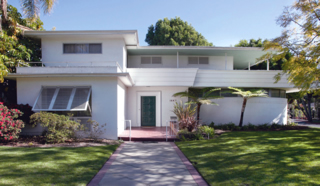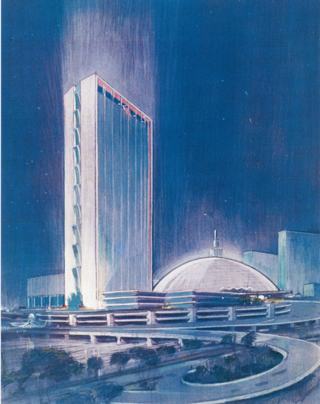Distinguished at Every Curve - Page 4
 |
 |
|
|
True, he designed important public housing projects, starting with Langston Terrace in Washington, D.C. in 1936, in partnership with the leading black architect Hilyard Robinson.
But unlike Neutra, for example, who was a socialist, and who assisted Williams on Pueblo del Rio public housing (1940) in Los Angeles, Williams believed that private, not public, initiative was key to improving people's lives. He urged blacks to become “the group which has the greatest percentage of home ownership.”
Frank Wilkinson, a longtime public housing activist and administrator in Los Angeles, said Neutra was deeply committed to public housing—but not Williams. “He was one of the most eminent blacks in Los Angeles,” Wilkinson wrote. “His name would have been of great value to our struggle.”
Still, Williams went on to design Nickerson Gardens, another Los Angeles project, in the 1950s. He also designed Berkeley Square, a postwar tract for African-Americans in Las Vegas originally called Westside Park. Williams' “personal interest in the problems of Las Vegas' Westside residents was a major contribution to the new development,” the Las Vegas Review-Journal wrote in 1945.
“Williams was Republican,” Jeh Johnson said, “but I wouldn't call him conservative in the sense of being really interested in working for rich people only. He really liked working on modest homes.”
But it wasn't Williams' views on housing that attracted the real ire of black activists. What incensed many were his views on social relations between whites and blacks.
 |
|
|
In an extraordinarily personal essay that ran in a popular magazine in 1937, ‘I Am a Negro,' Williams wrote: “Virtually everything pertaining to my professional life during those early years was influenced by my need to offset race prejudice, by my effort to force white people to consider me as an individual rather than as a member of a race.”
Although Williams worked for black clients—designing churches, funeral homes, and offices for black-owned insurance companies and banks—most of his clients, naturally, were white.
“He'd walk around construction sites with his hands behind his back so people wouldn't be put into the uncomfortable position of feeling they had to shake his hand,” Karen Hudson remembers.
 |
|
|
Williams had other ways of avoiding racial confrontations. While remaking the Beverly Hills Hotel, she said, one of Williams' junior architects lunching poolside gestured for Williams to join him. “My grandfather wouldn't come over. Black folks couldn't be served out by the pool.”
But if Williams never let prejudice stop him when it came to business, “He accepted in the social realm what he did not accept in the professional world: limitations on what he could do because of race,” Henderson wrote in his thesis.
“Of course I know that I cannot be accepted socially by the whites,” Williams wrote in ‘I Am a Negro.' “I have no desire to be, for I firmly believe that the Negro, in order to break down the racial barriers which affect his business success, should be ever careful in preserving the social barriers that set him apart. I have defined those social barriers for my own guidance and made it a rule never to attend social gatherings where white women are to be present.”
Many black progressives glowered; some used the ‘Uncle T' word.




